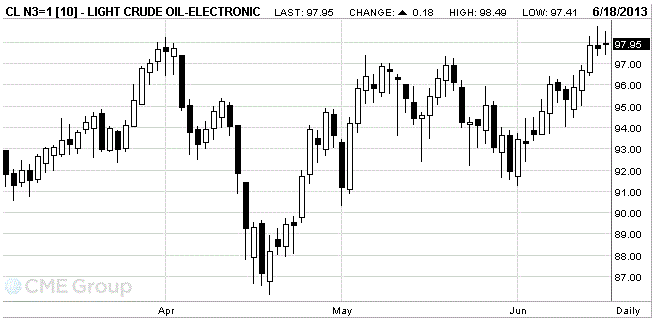- Oil: an overview of the market situation
Market news
Oil: an overview of the market situation
Oil prices rose slightly today ahead of tomorrow's meeting of the Federal Open Market Committee, which is expected to be able to shed light on the future monetary policy of the United States. It is worth noting that at the moment there is no clarity as to how to proceed with the policy of quantitative easing. Recall that the program in the amount of $ 85 billion per month so far supported the U.S. economy, which is the world's largest consumer of oil. Experts point out that stronger economic growth usually leads to a greater use of energy companies and an increase in demand for oil from motorists.
Oil traders pay close attention to the actions of the central bank during the period of recovery of the U.S. economy. But most of the attention was drawn to the speech of Fed Chairman Ben Bernanke in May, during which he said that the central bank can reduce the size of the program by buying bonds in the next few meetings against the gradually improving U.S. economy.
We add that the rise in prices also contribute to concerns about global supply disruptions, after the United States decided to play a more active role in the Syrian conflict. Recall that last week, the U.S. administration decided to arm the Syrian rebels. Meanwhile, Russia continues to support Syrian President Bashar al-Assad. Although Syria is not a major producer of oil, and military expansion in the country has the potential to spill over into neighboring countries that disrupt oil supplies in the Middle East.
The cost of the July futures on U.S. light crude oil WTI (Light Sweet Crude Oil) rose to 97.95 dollars a barrel on the New York Mercantile Exchange.
July futures price for North Sea Brent crude oil mixture rose 2 cents to $ 106.02 a barrel on the London exchange ICE Futures Europe.
